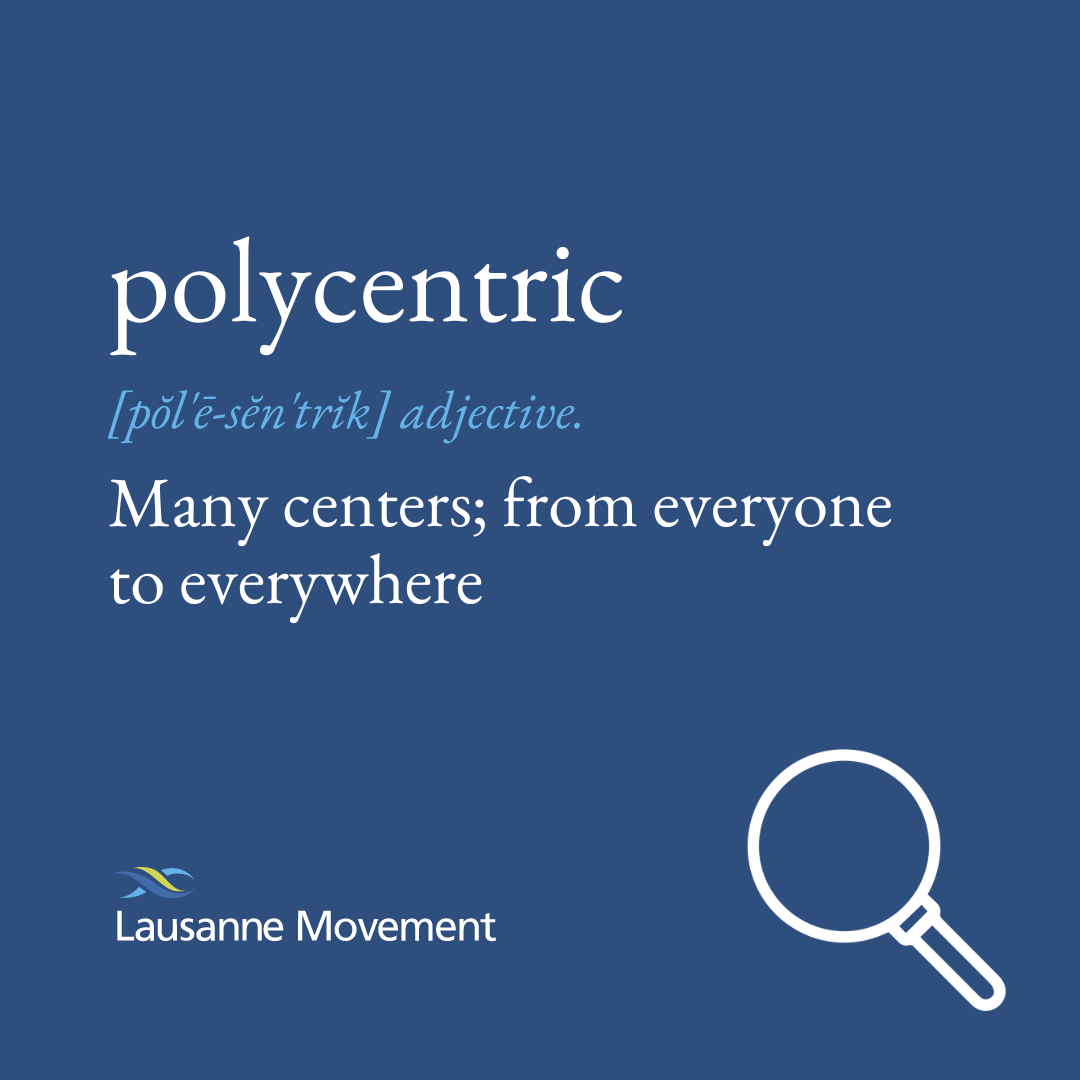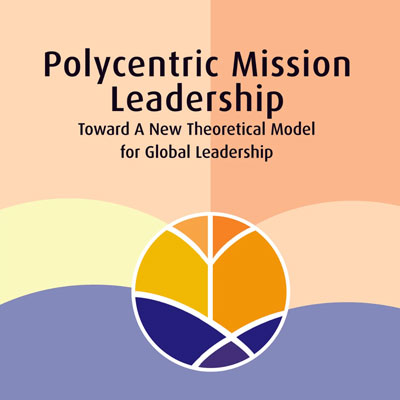As Jesus continues to build his Body, the global church, so the challenges as well as opportunities of diversity, ethnicity, cultures, communication, and collaboration become more apparent. As a result, mission leaders and influencers around the world are regularly required to address these tensions that exist in the church.
One of the latest terms that has quickly become popular in missiological circles is the word ‘polycentric’. It describes the concept of having more than one centre.

When applied to leadership, it reflects a developing model of diversity in leader teams and mission leadership—a paradigm that can only be fully appreciated when we come to see God’s design for his Body, that though we are many, and do not have the same functions or abilities, we are one in Christ and each member belongs to all the others (Rom 12:4-5).
When different musical notes are played or sung at the same time to make a beautiful sound, we call this ‘harmony.’ When we listen to an orchestral performance, the beauty of the harmony is in the chorus of various notes coming together to form one melodic sound.
It is precisely the tension between the individual notes which captures our attention. The orchestra practices together until each individual part no longer sounds on its own, but there is one collective expression of emotion. No one instrument is louder than another. No one instrument is stronger than another. Together, as they listen to each other and are guided by the conductor, they create music. In today’s interdependent world, the concept of musical harmony provides a framework for understanding polycentrism and how it can be an effective model for leadership.
In his prayer recorded in John chapter 17, Jesus prayed that ‘they may be one as we are one—I in them and you in me—so that they may be brought to complete unity. Then the world will know that you sent me and have loved them even as you have loved me’ (John 17:20-23). The key to unity is not uniformity, but rather humbly listening to one another’s voices and appreciating the different gifts and perspectives each one brings to the table.
Article
We Need a Better Kind of Polarization
Our unity should not be one-dimensional, and our diversity should not be divisive.
Christianity is the only religion which has no single holy place, no city or country that we attribute greater spiritual significance to, or which represents our faith. There is also no majority ethnic group or one culture which depicts our beliefs. Even the Scriptures were written by numerous different authors, from different geographic locations, and the Gospel accounts of Jesus’ life are an interweaving of different accounts into a single narrative. Embedded in Christianity is the idea of polycentrism.
What is polycentric leadership?
The term polycentric comes from two Greek words: polús, meaning ‘many’, and kentrikós, meaning ‘centre’. When we talk about polycentric leadership, we are speaking about leadership that functions across multiple spheres of influence, including geography, ethnicity, age, region, gender, and nationality. Polycentric leadership has many centres of authority or importance. In other words, it is a diversified leadership, from everyone to everywhere.
In my recently published book, Polycentric Mission Leadership, I (Joseph) show how polycentric mission leadership draws from a rich diversity of wisdom to guide the movement in mission. From each of these diverse peoples and platforms, a community is formed, rooted in Christ and his tri-fold identity. This community operates in a collective fashion, inspired by the Holy Spirit, empowering and releasing the gifts and potential of everyone in the movement.
The concept of polycentric missions is a corrective to the historically unicentric view of missions, where mission originates in one location and is directed to many places, demonstrated through phrases like ‘from the West to the rest’. This was (and sometimes still is) a commonly held view.
Fast-forward one hundred years, and things don’t operate in the same way. Today, mission is polycentric, meaning it happens from all locations to each other, ‘from everywhere to everywhere’. This requires that we assess and adjust our strategy for mission leadership, particularly as we engage in a diverse and changing face of global Christianity which looks very different to how it did one hundred or even fifty years ago.

Rather than operating from a centralised leadership structure, such as a top-down pyramid paradigm where there are a few individuals holding the power and influence at the top, or a decentralised approach, where influence and power is completely informal and lacks structure, a polycentric structure is neither centralised nor decentralised. It is a hybrid of the two, which maintains a level of bottom-up structure, while diversifying who holds the power and decision-making within a network of individuals. These individuals, who are from a range of contexts, give input from their own context and experience while also giving careful consideration to the contexts of others, unified by a single goal.
Scholars like Chris Wright have affirmed the biblical truth of the concept of polycentric missions. ‘Plurality of leadership is clearly God’s design both in Old Testament Israel (elders, judges, priests and prophets as well as kings), and the New Testament church,’ he writes. ‘And the history of Christian mission from the earliest centuries has been shown to be polycentric and multi-directional.’
Furthermore, studies in mission have looked to the Trinity as a foundation for this mission strategy. Just as the Father, Son, and Holy Spirit lead in a polycentric fashion (three in one), so mission leaders should incorporate polycentric leadership. There is no hierarchy in the Trinity, but each Person of the Godhead operates out of perfect unity.
Scholars Kirk Franklin and Nelus Niemandt write, ‘The structure of Trinitarian relations is characterised neither by a pyramidal dominance of the one [. . .] nor by a hierarchical bipolarity between the one and the many [. . .] but rather by a polycentric and symmetrical reciprocity of the many’. As we emulate this Trinitarian approach and seek to become more polycentric in leadership, we trust him to unify us.
For far too long, the modern picture of mission as uni-directional, western-centred, and hierarchically structured has unhelpfully dominated the scene. Polycentric mission leadership is about breaking that paradigm, which was never very accurate to begin with.
Global Analysis
Polycentrism as the New Leadership Paradigm
Six common themes for a Trinitarian approach to leading global missions.
Why is it important in mission leadership today?
In my book, I discuss how this model—a collaborative, communal approach to leadership that empowers multiple centres of influence as well as a diverse array of leaders—is uniquely suited to engage the leadership issues, challenges, and opportunities we currently face in the world.
Polycentric leadership relies on collaboration within multiethnic teams across multiple centres of operation, in order to assess the various gaps, opportunities, leaders and influencers of every sector and cultural context.
The vision for a movement based on this model of leadership is formed as leaders operate under the guidance of the Holy Spirit in a communal fashion, utilising the spiritual gifts and potential of each member. The diversity of the community allows them to accurately assess their contextual needs and give a voice to those who are often marginalised.
For diversity to be an effective resource, individuals must establish relationships where they can learn to value one another enough to appreciate each other’s culture, language, and experiences and value the voices of those in the margins. With this in mind, good cross-cultural communication and understanding is essential for every leader, particularly team leaders.
Lausanne is using this polycentric process as we prepare for Seoul 2024. We are listening to voices from every corner of the world and engaging with ideas from every region on earth, in order to be better informed on what our world is facing and how we can better reach every person meaningfully with the gospel and accelerate global mission together.
May Polycentric Mission Leadership help tune our ears to the beauty of the harmony found in the body of Christ, and may it help us to play our own parts better.
Book
Polycentric Missional Leadership
We need a new style of leadership for our current realities—collaborative, communal, and empowering. Available in the UK and on Kindle




